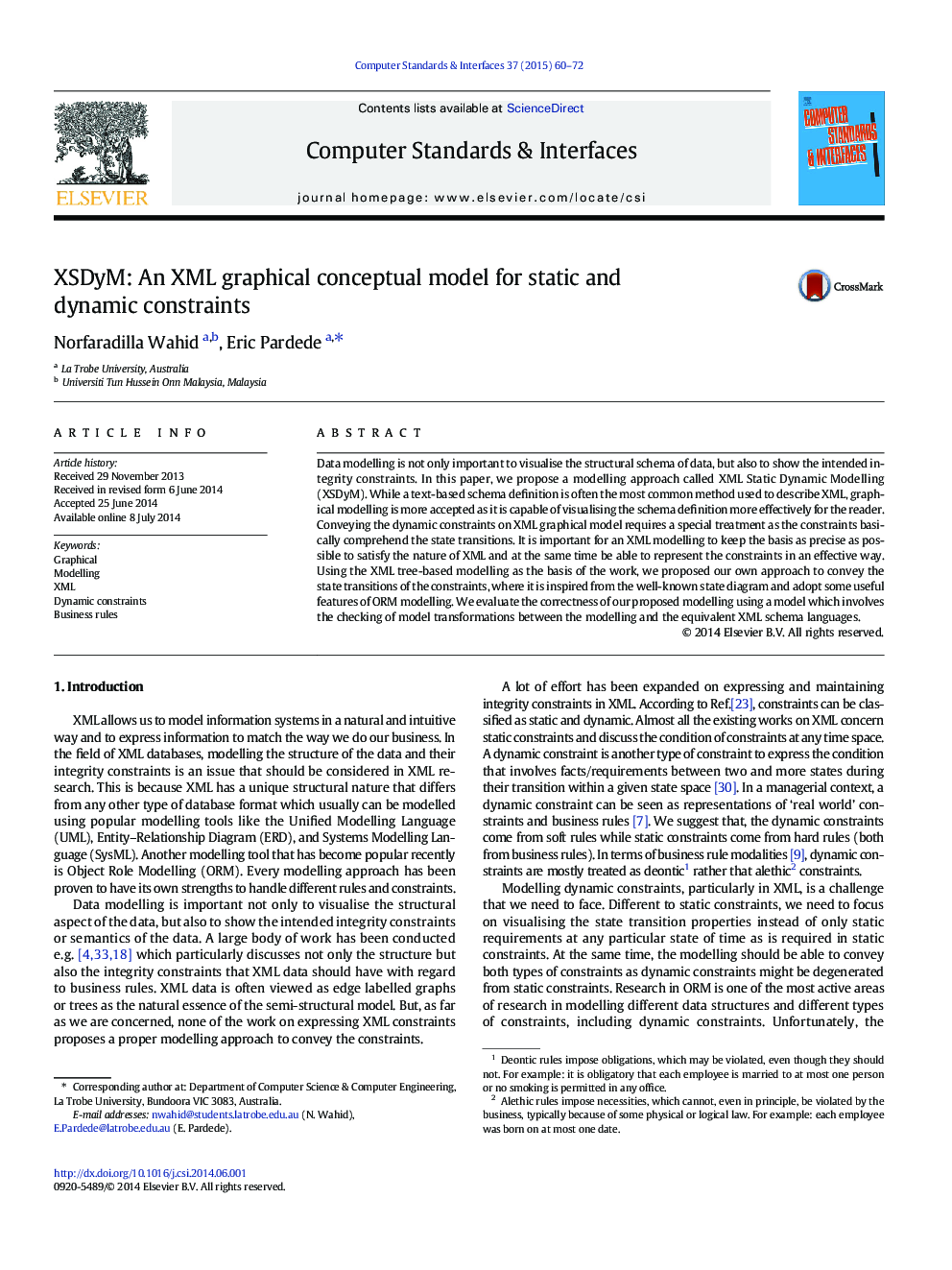| Article ID | Journal | Published Year | Pages | File Type |
|---|---|---|---|---|
| 454720 | Computer Standards & Interfaces | 2015 | 13 Pages |
•An approach for modelling static and dynamic constraints for XML is proposed.•Modelling the dynamic constraints requires a way to convey the state transitions.•The approach is inspired from a state diagram and the ORM modelling useful features.•Notation grammar to facilitate constraint expression is shown.•We evaluate the correctness of model transformations between the modelling and the equivalent XML schema languages.
Data modelling is not only important to visualise the structural schema of data, but also to show the intended integrity constraints. In this paper, we propose a modelling approach called XML Static Dynamic Modelling (XSDyM). While a text-based schema definition is often the most common method used to describe XML, graphical modelling is more accepted as it is capable of visualising the schema definition more effectively for the reader. Conveying the dynamic constraints on XML graphical model requires a special treatment as the constraints basically comprehend the state transitions. It is important for an XML modelling to keep the basis as precise as possible to satisfy the nature of XML and at the same time be able to represent the constraints in an effective way. Using the XML tree-based modelling as the basis of the work, we proposed our own approach to convey the state transitions of the constraints, where it is inspired from the well-known state diagram and adopt some useful features of ORM modelling. We evaluate the correctness of our proposed modelling using a model which involves the checking of model transformations between the modelling and the equivalent XML schema languages.
